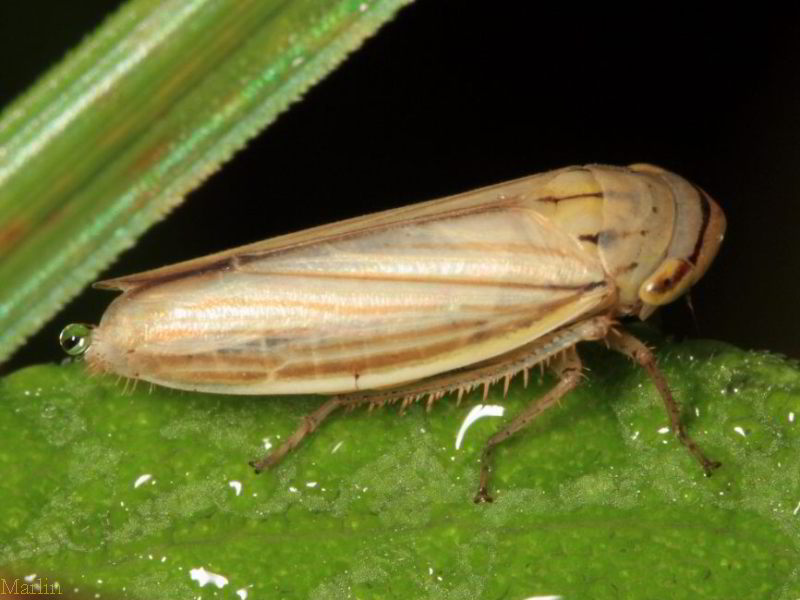Glassy-Winged Sharpshooter – Homalodisca vitripennis
Glassy-Winged Sharpshooter. Photos: Roy Niswanger
“Sharpshooter” is one common name for the leafhopper subfamily Cicadellinae, which includes Paraulacizes, Oncometopia, Cuerna, Draeculacephala, Graphocephala and many other genera. They get this name from their habit of feeding on the watery sap of xylem tissue, which conducts moisture from the roots up to the leaves. This sap is so nutrient-poor (especially lacking nitrogen), the hopper must process vast quantities to attain the energy it needs; the resultant excess water droplets are forced out the tip of the abdomen with an audible popping noise, hence the common name. [1]
Family Cicadellidae – Leafhoppers. Live sharpshooter photographed at Austin, Texas
These insects have long attracted attention because of their bizarre forms and unusual behaviors. Many species are gregarious, forming large and often conspicuous groups of adults and immatures. Some of these are ant-mutualistic and may also exhibit presocial behavior. Most species are solitary and these are often cryptic, at least as immatures. True to their name, treehoppers are most abundant in forest or savanna habitats, particularly in the tropics, where they utilize a wide variety of tree species as host plants. [1]
 Silver Leafhopper, Athysanus argentarius with “sharpshooter” popping butt bubble
Silver Leafhopper, Athysanus argentarius with “sharpshooter” popping butt bubble
References
1. Bugguide.net, Subfamily Cicadellinae
2. BugGuide.net, Homalodisca vitripennis (Glassy-winged sharpshooter)
3. Gary A. Dunn, Insects of the Great Lakes Region (University of Michigan Press/Regional, 1996).
Order Hemiptera: True Bugs number almost 5,000 species in North America, and 40,000 worldwide. They have mouthparts formed into a beak, adapted for sucking plant juices or the liquefied insides of their animal prey.
Suborder Auchenorrhyncha – Cicadas & Planthoppers
Suborder Sternorrhyncha – Aphids, scales, mealybugs, jumping plant lice.
